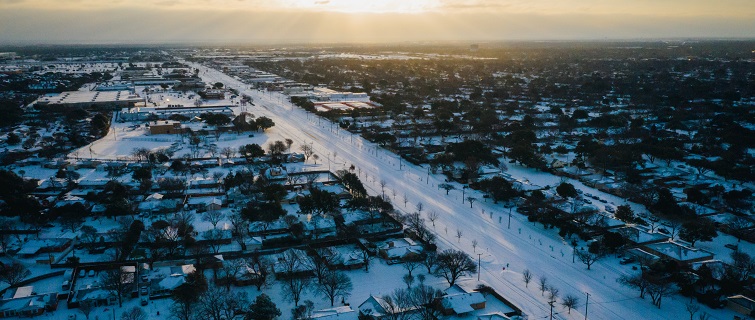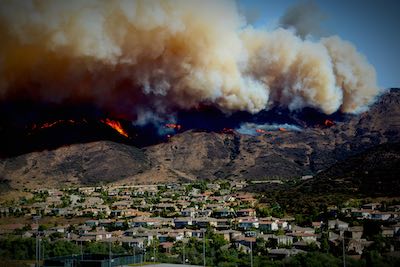
For the first four weeks of his course in public health emergencies, Donell Harvin talks almost exclusively about disasters in the developing world: events like the 2004 Indonesian tsunami, the 2010 earthquake in Haiti, and the devastating famine that enveloped Yemen and South Sudan in 2017.
The information is certainly compelling for his students, who are working towards the Master’s in Emergency & Disaster Management degree at Georgetown University. But sometimes they ask if it is truly relevant to their careers.
“Students are, like, ‘Well, we’re in the United States,’” said Harvin, DrPH, Chief of Homeland Security and Intelligence for the District of Columbia. “‘I’m not going to do international work. Why are we going into this?’”
The simple answer: Texas, Feb. 15, 2021.
Ice, Snow, and Bitter Cold
On the third Monday in February, much of the Lone Star State was engulfed in paralyzing ice and snow, and record-breaking low temperatures caused by what meteorologists call a “breakdown” in the Polar Vortex. That sent frigid air into the normally mild South, with temperatures in Dallas dropping to 5 degrees Fahrenheit, the coldest the city has experienced in more than 31 years.
Pumping stations, power plants, and gas lines froze. By Tuesday, Feb. 16, at least 4.5 million customers had lost power. People bundled up in blankets in their sub-freezing homes. Dozens of people died, but the exact number may not be known for months.
“If you have a technological disaster in the United States—a natural disaster that creates an infrastructure, technological disaster—we’re no better than any of the countries in sub-Saharan Africa,” said Harvin, who also teaches in Georgetown’s Master’s in Applied Intelligence program. “We have more capacity. But if you don’t have power, you don’t have connectivity. Mother Nature is throwing you back to the Stone Age. All of the technology that you have, that you rely on, is useless.”
In fact, in one sense—one that has less to do with capabilities than experience and mindset—less developed countries are more prepared because they confront these kinds of hardships all the time.
“They’re used to operating in austere environments,” Harvin said.
With investigations just beginning, Harvin said it is too early to cast blame or point to a definitive cause beyond the obvious conclusion that America’s energy capital was unprepared.
‘An Ounce of Prevention …’
One problem is that the Texas electrical grid is separate from the systems serving the other states. This highly deregulated system keeps prices down during normal times, but can send them spiking during emergencies. And, unlike nearby states, being on an independent grid means that if Texas needs power, it can’t easily borrow from its neighbors.
With an average February temperature in the mid-60s, Texas doesn’t have to worry about freezing pipes during most years. However, in 1991, after the state suffered a similar, if smaller-scaled storm, it was warned that the grid needed to be winterized in case another event happened in the future. But those warnings were largely ignored.
Harvin said that this kind of avoidance is common and shows that money spent to prevent or mitigate disasters can be worth many times that investment if such a disaster should actually occur.
“Emergency management preparedness and resilience is often an afterthought in governments, and they don’t put as much funds into maintenance and resilience,” Harvin said. “History is going to continue to repeat itself, and resilient cities and states learn from their mistakes and the mistakes of others. So, hopefully, Texas has learned, and other states have learned from Texas—or we’ll have the same conversation in 20 years.”
